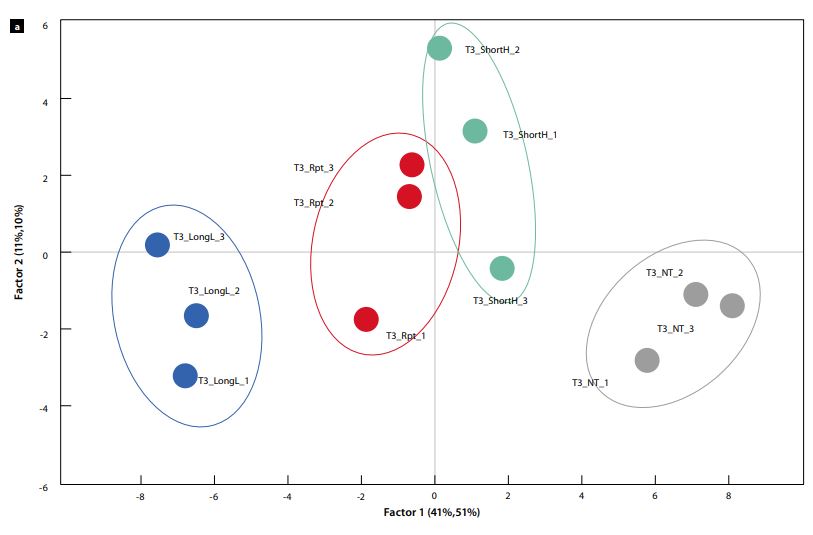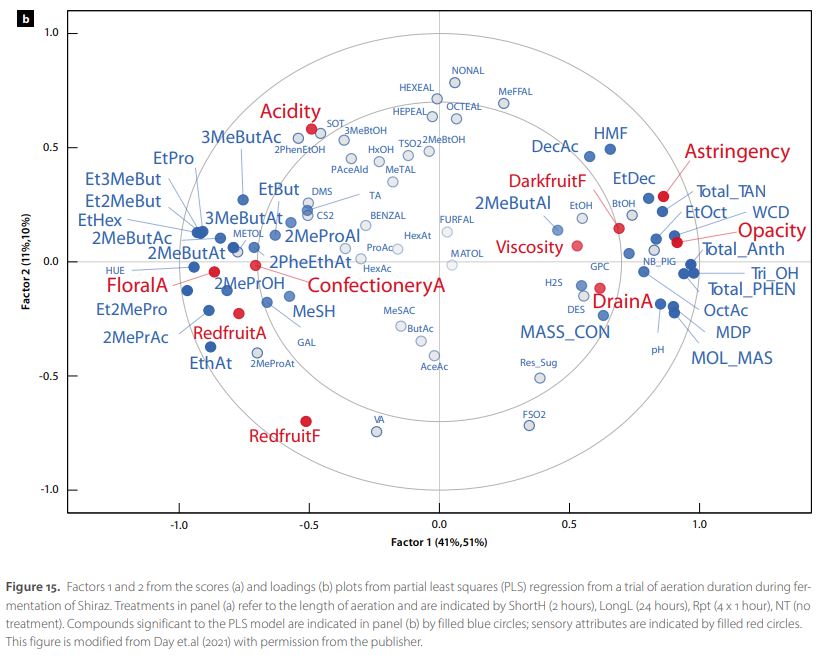Influencing wine style and efficiency through management of oxygen during wine production
Project summary
This project will use both model systems and pilot-scale fermentations to investigate the impacts of oxygen exposure at crushing or during fermentation on fermentation efficiency and wine style. Shiraz and Chardonnay have been the primary varieties investigated to date, and it is of value to establish whether the impacts observed with these varieties also translate to other varieties and styles such as Merlot, Cabernet Sauvignon, rosé, sparkling wines, alternative varieties, and also spontaneous fermentations.
The project will also monitor wines with known oxygen exposure as they age, to assess oxygen-related chemical changes that occur after fermentation. Factors that modulate these changes (e.g. metals, pH, time and duration of oxygen exposure) are critical to delivering the best quality product to the market and the consumer.
Finally, practical knowledge about methods for appropriate delivery of oxygen to fermentations, and dose, remains a limiting factor affecting the uptake of oxygen use by industry. In collaboration with industry partners, this project will address this limitation by exploring different approaches to oxygen delivery and developing knowledge and advice to pass on to winemakers.
Latest information
Aeration of wild ferments – a window on whites
The motivation for using aeration as a fermentation management tool may vary for those conducting non-inoculated fermentations, and the practice may also introduce new opportunities. Modulating the timing of aeration provides a chance to interact with microbial community members other than Saccharomyces cerevisiae, which can be dominant during the early phases of fermentation. Earlier work showed that long-duration, low-intensity aeration of non-inoculated white ferments decreased ferment duration, similar to the effect in inoculated ferments. Ferment duration decreased irrespective of when aeration was applied within the first three days. However, aeration at 72 hours after grape crush resulted in the biggest decrease in fermentation duration. Analysis of microbial community structure revealed that earlier aerations benefitted specific genera within the ferment, most notably Hanseniaspora and Torulaspora. However, species-level changes, as have been observed following SO2 addition (Cuijvers et al. 2020), were not observed following aeration. Overall the wines’ chemical composition was minimally affected by aeration; nonetheless, the wine produced without aeration was more similar to wine produced with later aeration than earlier aeration. The similarity of later aeration to non-aerated ferments is presumably because the benefits of later aeration accrue more to S. cerevisiae than the non-Saccharomyces genera.
If a little aeration soon after grape crush helps promote the persistence of non-Saccharomyces genera and reduces fermentation time, is more aeration better? The idea that more aeration is better for non-inoculated white ferments was put to the test by aerating ferments with increasing intensity for 24 hours after grape crush. The effect of aeration on fermentation progress was similar to that observed in the previous year; however, marked changes in the volatile profile of the wines were observed, particularly for the higher intensity treatments. Higher intensity aeration stimulated increases in volatile acidity and promoted the production of higher alcohols. Analysis of microbial community composition again showed that early aeration stimulated the growth of several non-Saccharomyces species, particularly Hanseniaspora and Torulaspora, but that increasing the aeration intensity did not result in higher cell numbers for those populations. At the highest aeration intensities, decreases in the S. cerevisiae population size were observed. This work has shown that aeration can be used successfully to reduce fermentation times in non-inoculated fermentations. However, it is possible to aerate white ferments excessively, with excess volatile acidity the result (Varela et al. 2021).
If aeration can reduce fermentation times in white ferments, what about reds?
This year the project team completed an analysis of four years of pilot-scale vintage trials evaluating the effect of aeration on Shiraz ferments. This work provides a comprehensive overview of what to expect when aerating a red ferment (Day et al. 2021). Crucially, it shows that the aeration of a red ferment is unlikely to decrease fermentation time. If there is no stimulation of fermentation performance, why should a winemaker aerate their red ferments? The answer lies in the ability of aeration to promote ‘red fruit’ characters in red wines and suppress ‘reductive’ characters and astringency. The study also showed that the changes to wine style associated with aeration could be achieved without adverse effects on malolactic fermentation, whether conducted simultaneously or sequentially.
The promotion of ‘red fruit’ characters was strongly related to increases in the concentration of ethyl-2 and ethyl-3-methylbutanoate (abbreviated as Et2MeBut and Et3MeBut in Figure 15) across the entire series of trials. Aeration’s suppression of ‘reductive’ characters was related to low molecular weight sulfur compound concentrations, a previously described relationship (Bekker et al. 2021). Finally, the work also highlighted the general resilience of red fermentations to aeration. Unlike white ferments, red ferments exposed to high-intensity aerations did not suffer the same detrimental effects of volatile acidity. In examples where elevated volatile acidity was measured analytically, it was not perceived by the sensory panel that evaluated the wines.
In summary, although the boost to fermentation performance may not be the same in red as in white fermentations, the reasons for using aeration are still compelling. In red ferments, aeration becomes a tool for shaping wine style instead of managing fermentation performance. 

References
Bekker, M.Z., Nandorfy, D.E., Kulcsar, A.C., Faucon, A., Bindon, K., Smith, P.A. 2021. Comparison of remediation strategies for decreasing ‘reductive’ characters in Shiraz wines. Aust. J. Grape Wine Res. 27: 52–65.
Cuijvers, K., Van Den Heuvel, S., Varela, C., Rullo, M., Solomon, M., Schmidt, S., Borneman, A. 2020. Alterations in yeast species composition of uninoculated wine ferments by the addition of sulphur dioxide. Fermentation. 6(2): 62.
Day, M.P., Nandorfy, D.E., Bekker, M.Z., Bindon, K.A., Solomon, M., Smith, P.A., Schmidt, S.A. 2021. Aeration of Vitis vinifera Shiraz fermentation and its effect on wine chemical composition and sensory attributes. Aust. J. Grape Wine Res. 27: 360-377.
Varela, C., Cuijvers, K., Van Den Heuvel, S., Rullo, M., Solomon, M., Borneman, A., Schmidt, S. 2021. Effect of aeration on yeast community structure and volatile composition in uninoculated Chardonnay wines. Fermentation. 7(2): 97.
Project Contacts
Simon Schmidt

